Note
Go to the end to download the full example code.
Plotting with mne.viz.Brain#
In this example, we’ll show how to use mne.viz.Brain.
# Author: Alex Rockhill <aprockhill@mailbox.org>
#
# License: BSD-3-Clause
# Copyright the MNE-Python contributors.
Load data#
In this example we use the sample data which is data from a subject
being presented auditory and visual stimuli to display the functionality
of mne.viz.Brain for plotting data on a brain.
import matplotlib.pyplot as plt
from matplotlib.cm import ScalarMappable
from matplotlib.colors import Normalize
import mne
from mne.datasets import sample
print(__doc__)
data_path = sample.data_path()
subjects_dir = data_path / "subjects"
sample_dir = data_path / "MEG" / "sample"
Add source information#
Plot source information.
brain_kwargs = dict(alpha=0.1, background="white", cortex="low_contrast")
brain = mne.viz.Brain("sample", subjects_dir=subjects_dir, **brain_kwargs)
stc = mne.read_source_estimate(sample_dir / "sample_audvis-meg")
stc.crop(0.09, 0.1)
kwargs = dict(
fmin=stc.data.min(),
fmax=stc.data.max(),
alpha=0.25,
smoothing_steps="nearest",
time=stc.times,
)
brain.add_data(stc.lh_data, hemi="lh", vertices=stc.lh_vertno, **kwargs)
brain.add_data(stc.rh_data, hemi="rh", vertices=stc.rh_vertno, **kwargs)
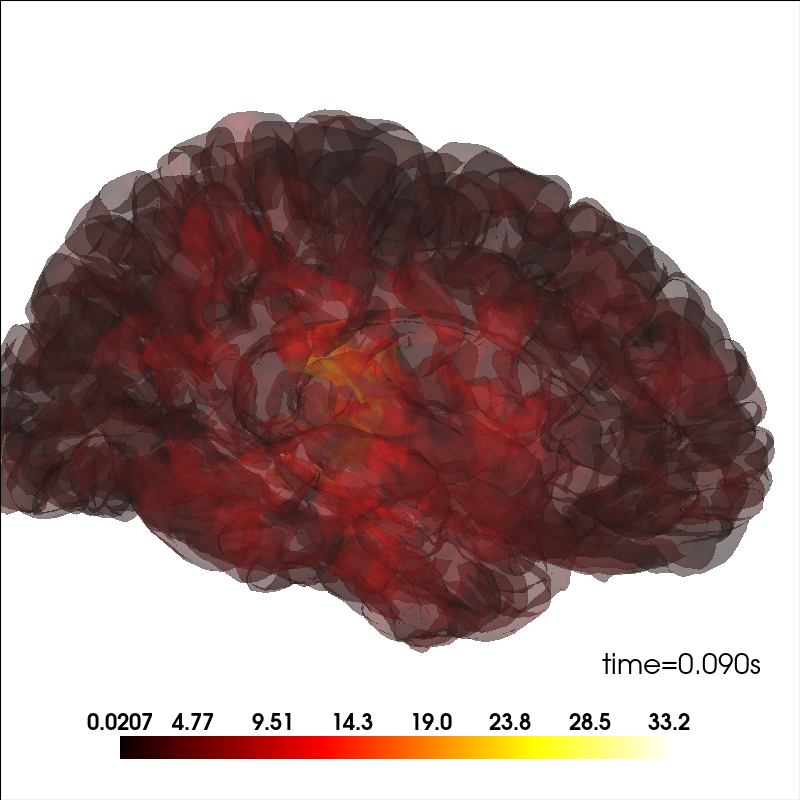
Modify the view of the brain#
You can adjust the view of the brain using show_view method.
brain = mne.viz.Brain("sample", subjects_dir=subjects_dir, **brain_kwargs)
brain.show_view(azimuth=190, elevation=70, distance=350, focalpoint=(0, 0, 20))
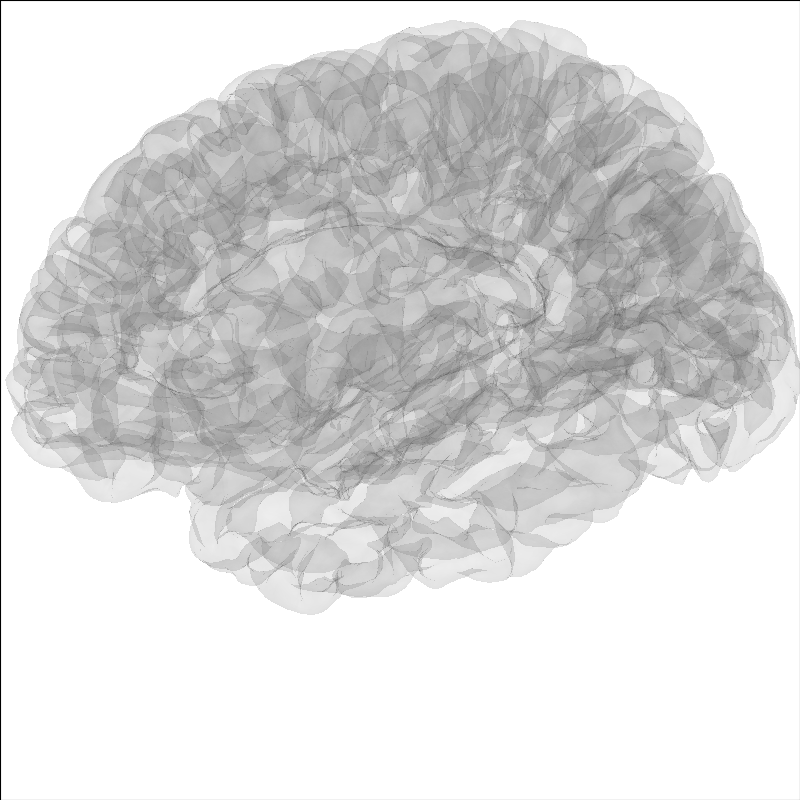
Highlight a region on the brain#
It can be useful to highlight a region of the brain for analyses.
To highlight a region on the brain you can use the add_label method.
Labels are stored in the Freesurfer label directory from the recon-all
for that subject. Labels can also be made following the
Freesurfer instructions
Here we will show Brodmann Area 44.
Note
The MNE sample dataset contains only a subselection of the
Freesurfer labels created during the recon-all.
brain = mne.viz.Brain("sample", subjects_dir=subjects_dir, **brain_kwargs)
brain.add_label("BA44", hemi="lh", color="green", borders=True)
brain.show_view(azimuth=190, elevation=70, distance=350, focalpoint=(0, 0, 20))
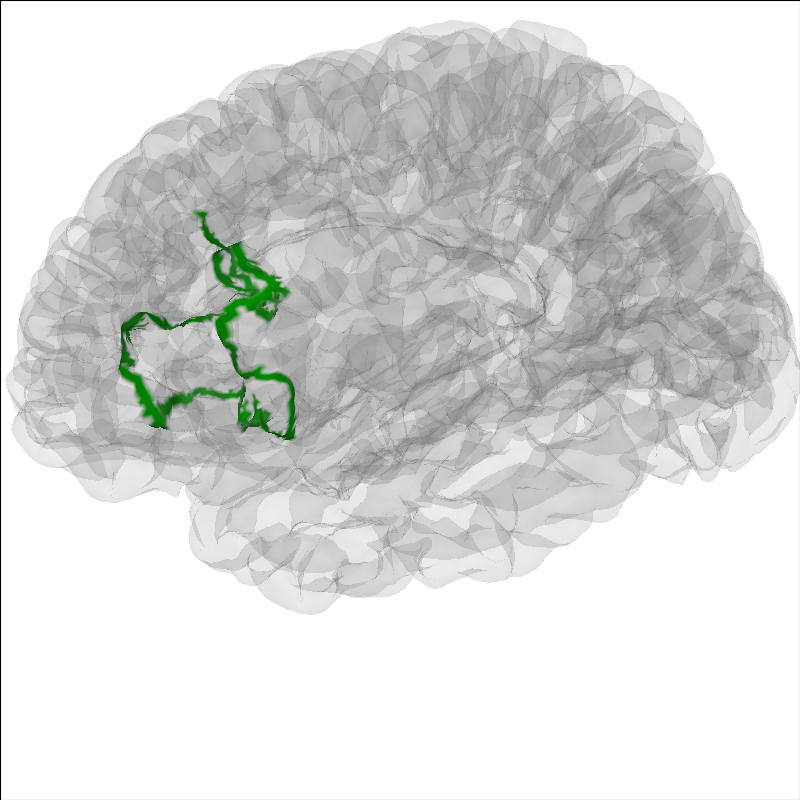
Include the head in the image#
Add a head image using the add_head method.
brain = mne.viz.Brain("sample", subjects_dir=subjects_dir, **brain_kwargs)
brain.add_head(alpha=0.5)
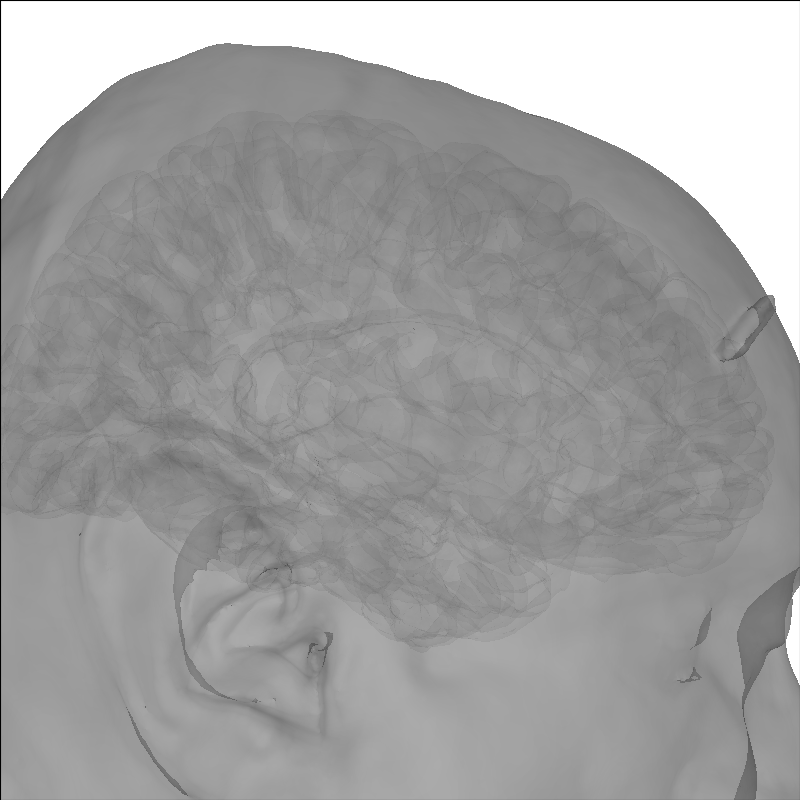
Using lh.seghead for head surface.
Add sensors positions#
To put into context the data that generated the source time course, the sensor positions can be displayed as well.
brain = mne.viz.Brain("sample", subjects_dir=subjects_dir, **brain_kwargs)
evoked = mne.read_evokeds(sample_dir / "sample_audvis-ave.fif")[0]
trans = mne.read_trans(sample_dir / "sample_audvis_raw-trans.fif")
brain.add_sensors(evoked.info, trans)
brain.show_view(distance=500) # move back to show sensors
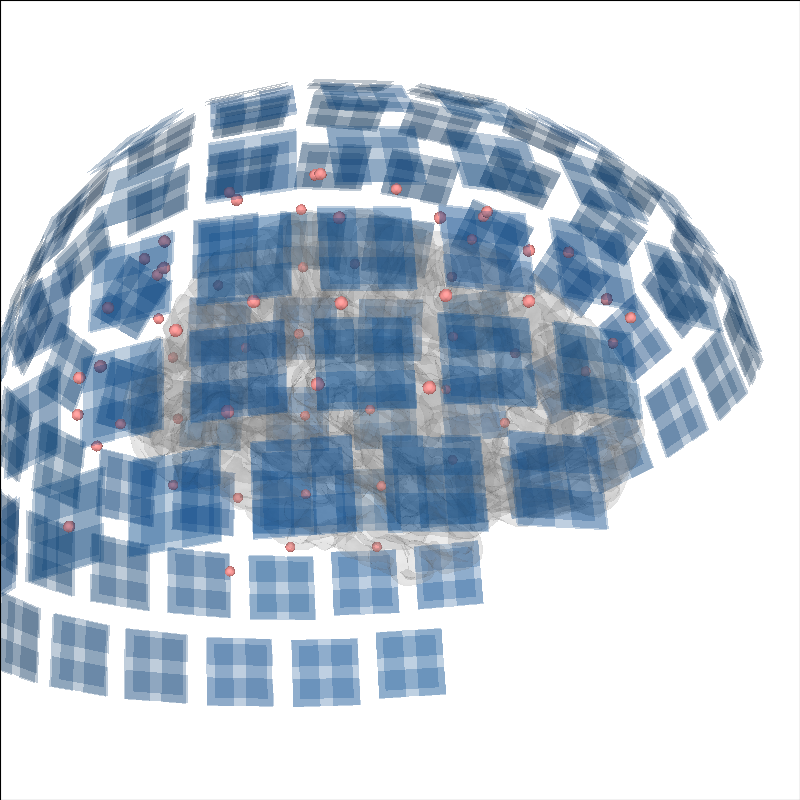
Reading /home/circleci/mne_data/MNE-sample-data/MEG/sample/sample_audvis-ave.fif ...
Read a total of 4 projection items:
PCA-v1 (1 x 102) active
PCA-v2 (1 x 102) active
PCA-v3 (1 x 102) active
Average EEG reference (1 x 60) active
Found the data of interest:
t = -199.80 ... 499.49 ms (Left Auditory)
0 CTF compensation matrices available
nave = 55 - aspect type = 100
Projections have already been applied. Setting proj attribute to True.
No baseline correction applied
Read a total of 4 projection items:
PCA-v1 (1 x 102) active
PCA-v2 (1 x 102) active
PCA-v3 (1 x 102) active
Average EEG reference (1 x 60) active
Found the data of interest:
t = -199.80 ... 499.49 ms (Right Auditory)
0 CTF compensation matrices available
nave = 61 - aspect type = 100
Projections have already been applied. Setting proj attribute to True.
No baseline correction applied
Read a total of 4 projection items:
PCA-v1 (1 x 102) active
PCA-v2 (1 x 102) active
PCA-v3 (1 x 102) active
Average EEG reference (1 x 60) active
Found the data of interest:
t = -199.80 ... 499.49 ms (Left visual)
0 CTF compensation matrices available
nave = 67 - aspect type = 100
Projections have already been applied. Setting proj attribute to True.
No baseline correction applied
Read a total of 4 projection items:
PCA-v1 (1 x 102) active
PCA-v2 (1 x 102) active
PCA-v3 (1 x 102) active
Average EEG reference (1 x 60) active
Found the data of interest:
t = -199.80 ... 499.49 ms (Right visual)
0 CTF compensation matrices available
nave = 58 - aspect type = 100
Projections have already been applied. Setting proj attribute to True.
No baseline correction applied
Channel types:: grad: 203, mag: 102, eeg: 59
Getting helmet for system 306m
Add current dipoles#
Dipole modeling as in The role of dipole orientations in distributed source localization can be plotted on the brain as well.
brain = mne.viz.Brain("sample", subjects_dir=subjects_dir, **brain_kwargs)
dip = mne.read_dipole(sample_dir / "sample_audvis_set1.dip")
cmap = plt.colormaps["YlOrRd"]
colors = [cmap(gof / dip.gof.max()) for gof in dip.gof]
brain.add_dipole(dip, trans, colors=colors, scales=list(dip.amplitude * 1e8))
brain.show_view(azimuth=-20, elevation=60, distance=300)
img = brain.screenshot() # for next section
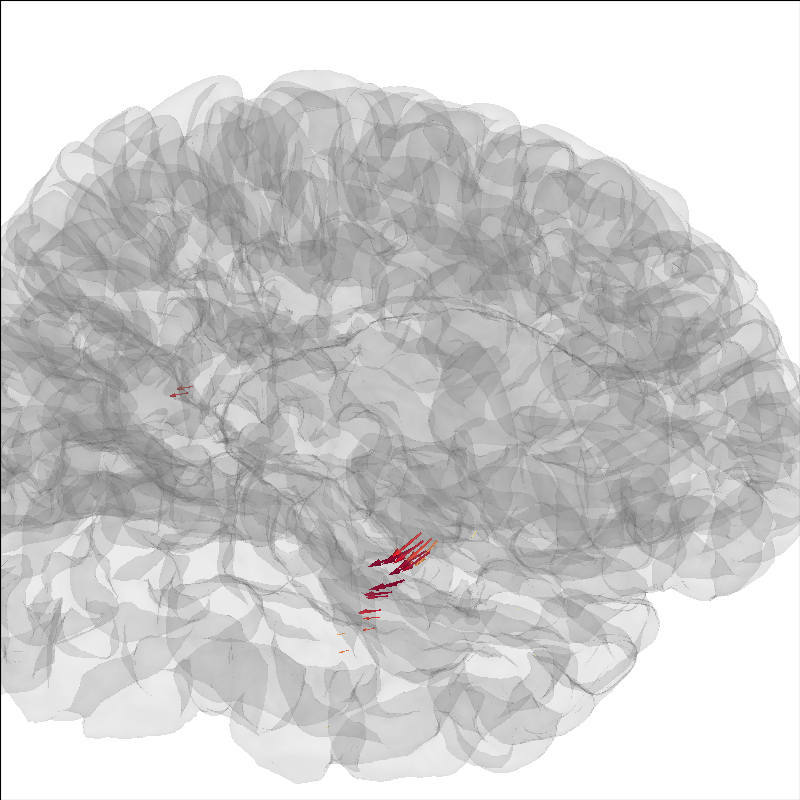
34 dipole(s) found
Create a screenshot for exporting the brain image#
Also, we can a static image of the brain using screenshot (above),
which will allow us to add a colorbar. This is useful for figures in
publications.
fig, ax = plt.subplots()
ax.imshow(img)
ax.axis("off")
cax = fig.add_axes([0.9, 0.1, 0.05, 0.8])
norm = Normalize(vmin=0, vmax=dip.gof.max())
fig.colorbar(ScalarMappable(norm=norm, cmap=cmap), cax=cax)
fig.suptitle("Dipole Fits Scaled by Amplitude and Colored by GOF")
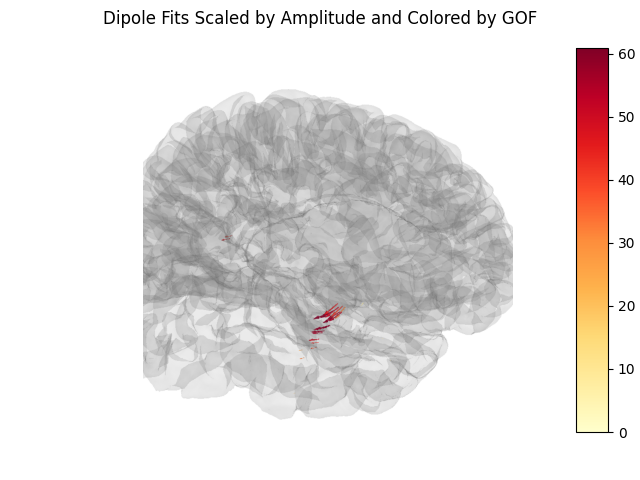
Total running time of the script: (0 minutes 43.247 seconds)